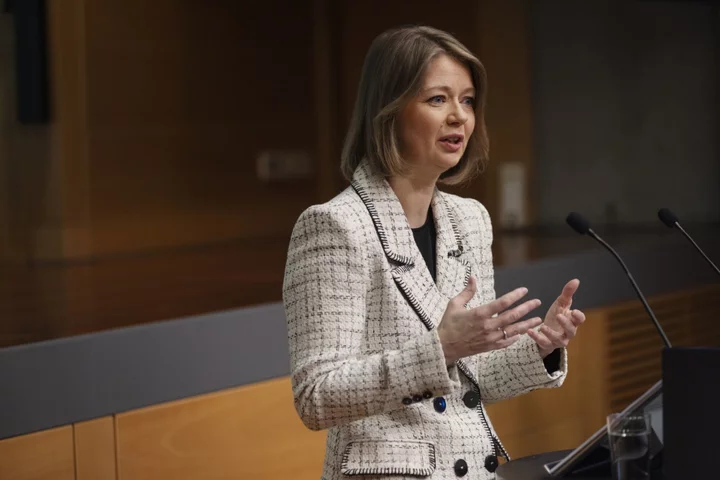Norway’s central bank accelerated interest-rate increases and pledged more aggressive tightening, intensifying its response to stubborn inflation and a weak currency.
Norges Bank lifted its key deposit rate on Thursday by 50 basis points to 3.75%, prompting the krone to post its biggest advance in two weeks.
The decision outcome was anticipated by a large minority of economists, with the rest predicting a smaller move. This is the 11th hike in the Norwegian benchmark since September 2021.
Officials said the rate will “most likely be raised further in August,” and they sharply raised their projection for borrowing costs, seeing a peak at 4.25% later this year.
“Today’s hawkish decision shows that Norges Bank means business and is concerned about inflation,” Nordea analysts Dane Cekov and Kjetil Olsen said in a report. “The decision is justified, given that inflation has come in markedly higher than anticipated.”
Norwegian policymakers have opted for more aggression to curb consumer-price gains at a time when recent data show households and companies in the fossil-fuel-rich nation remain relatively resilient to higher costs.
That chimes with the renewed alarm among global peers at the dangers posed by undefeated inflation. While the Federal Reserve has already tightened much further than Norges Bank, Chair Jerome Powell told lawmakers on Wednesday that officials may resume rate hikes in coming months, albeit at a moderate pace.
“If we do not raise the policy rate, prices and wages could continue to rise rapidly and inflation become entrenched,” the Norwegian governor, Ida Wolden Bache, said in a statement. “It may then become more costly to bring inflation down again.”
The Norges Bank increase coincides with a busy day for global monetary policymakers. Half an hour earlier, the Swiss National Bank delivered a 25 basis-point hike. Later on Thursday, the Bank of England decision may also be a close call between a quarter-point and half-point step.
The krone — the second-worst performing currency in Group-of-10 currencies this year — strengthened as much as 1.6% against the euro after the decision. It pared gains to trade 1.2% stronger at 11.5827 per euro as of 9:45 a.m. in London.
Officials said that the currency’s level was one motivation for the rate hike.
“Higher wage growth and a weaker krone than projected earlier will push up inflation ahead,” the central bank’s statement observed. “If the krone turns out to be weaker than assumed or pressures in the economy persist, a higher-than-projected policy rate may be needed.”
(Updates with economist reaction in fourth paragraph)

